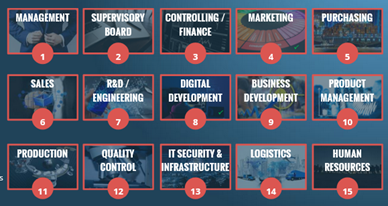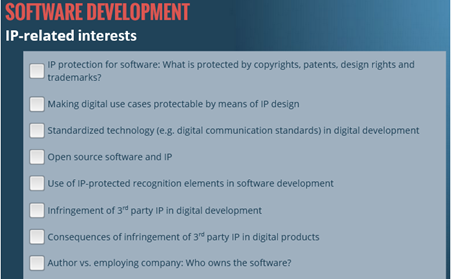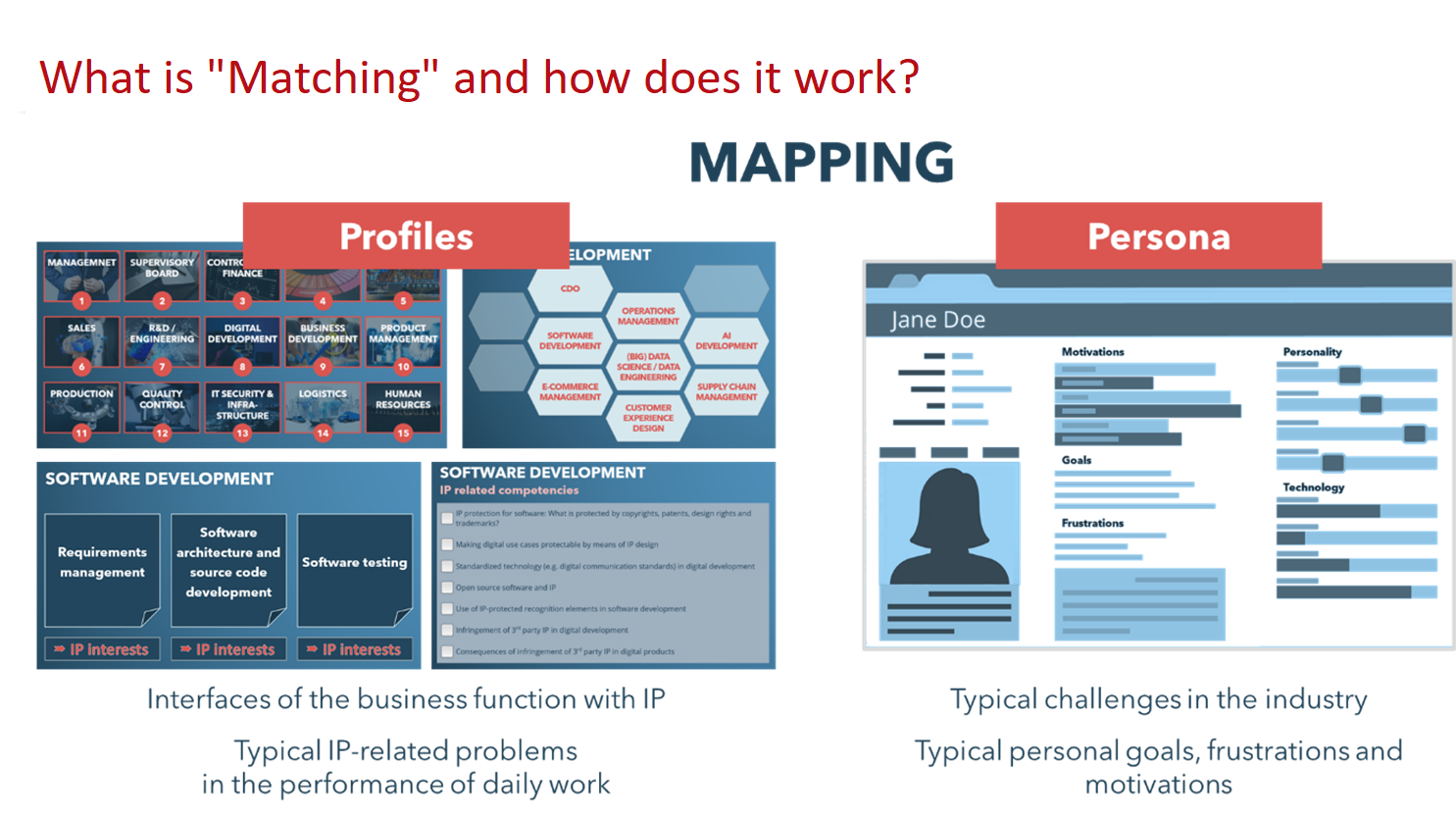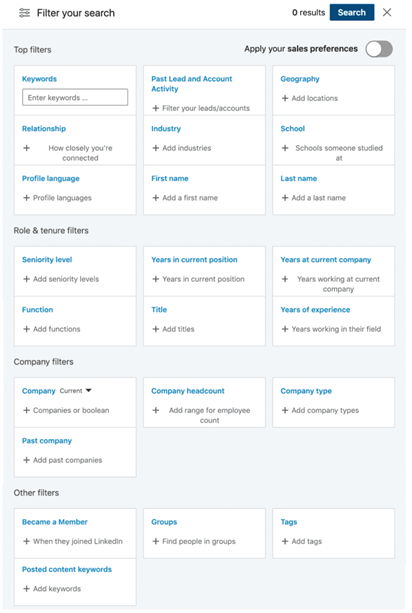IP Awareness Building under New Work Conditions: Matching with digital Tools
Part of the New Work reality is that you don’t rely solely on personal recommendations as an IP expert, nor on more or less random contacts at conferences and presence events. Of course, people need contact with other people, and the more personal charisma an IP expert has, the more likely he or she is to seek personal exchange at presence events.
But using face-to-face events for awareness building and business development has several characteristic disadvantages:
 Effort: Attending face-to-face events means you have to be at a location in person. It also means that you cannot provide your own billable services at that time, nor can you be at another – possibly simultaneous – event. In addition, there are both the expenses for travel to and from the event, as well as the loss of time associated with this again. All these factors do not occur with digital IP awareness building on social media such as LinkedIn.
Effort: Attending face-to-face events means you have to be at a location in person. It also means that you cannot provide your own billable services at that time, nor can you be at another – possibly simultaneous – event. In addition, there are both the expenses for travel to and from the event, as well as the loss of time associated with this again. All these factors do not occur with digital IP awareness building on social media such as LinkedIn.
Time: The time aspect of face-to-face events is not helpful for systematic IP awareness building and business development in several ways. You only have a specific window of time when the event takes place and how long it lasts, and the active time you can interact with others is also defined and limited. These limitations do not occur with digital IP awareness building on LinkedIn.
Systematics: This is the decisive point for the efficiency and effectiveness of digital awareness building compared to presence activities. It starts with the question of who comes to the event in the first place, who you meet, and what you know about the person you meet more or less by chance during the coffee break at the conference or lecture.
 This is exactly where the so-called matching in awareness building and systematic business development for IP experts comes into play. It is not enough to have the opportunity to make contacts 24/7 and to show competence, it is above all that you address the right person at the right time in the right way on the right topic – then you will be rewarded with attention.
This is exactly where the so-called matching in awareness building and systematic business development for IP experts comes into play. It is not enough to have the opportunity to make contacts 24/7 and to show competence, it is above all that you address the right person at the right time in the right way on the right topic – then you will be rewarded with attention.
When it comes to services, matching means addressing the right target group at the right time for your own service and already generating customer satisfaction by addressing them. And one must not forget that satisfied clients report an average of four potential clients about the positive experience. This means that the most important step towards customer satisfaction lies in addressing the target group correctly – it is simply very unlikely that this can be achieved systematically at a face-to-face event such as a conference.
Efficient and effective matching requires an understanding of the target audience. In accordance with ISO56005/DIN77006, it helps to know which target group in the company must have which knowledge about IP. A content portal makes it possible to record these information needs for specific target groups.
With this definition, the right audience for your own message can be found using the information provided on LinkedIn. Various tools such as the LinkedIn Sales Navigator and AI-based continuous monitoring of communication help to find the right time for an interaction.
Successful IP awareness building and business development as a data-driven process
The starting point for data-driven IP awareness building and business development is the basic logic of client centricity. Client centricity refers to a business philosophy and strategy that prioritizes the needs and wants of customers in all aspects of the experts’ operations. A client-centric expert is focused on creating positive experiences for its clients and building long-term relationships with them. The goal of client centricity is to understand and meet the needs of individual clients in order to increase customer satisfaction, loyalty, and ultimately, business success.
The data-driven IP awareness building and business development process starts with a persona profile of the target. A client persona is a fictional representation of an IP expert’s ideal client, based on an understanding of the market situation and existing clients. It is used to understand and effectively communicate with the specific target group. A client persona typically includes information about the client’s business situation, goals, values, and pain points. It also can include information about their behaviour patterns, such as where they look for information, with whom they are already connected, who they follow on LinkedIn etc.
 The above-mentioned content portal has already predefined profiles and respective IP needs and issues for nearly every position in the industry. In the figure is an overview of the predefined roles given.
The above-mentioned content portal has already predefined profiles and respective IP needs and issues for nearly every position in the industry. In the figure is an overview of the predefined roles given.
The respective role-specific IP requirements are also stored in these different profiles. These IP needs then serve as a filter in data-driven IP awareness building and business development to ensure that the respective target group only receives IP information that also factually fits the task of the person addressed and represents meaningful, practice-relevant information. The structure of the predefined profiles is structured according to activities in the company. Here is an example of digital  development (in the figure it is #8) and the different main activities and role descriptions that exist in such a field of activity.
development (in the figure it is #8) and the different main activities and role descriptions that exist in such a field of activity.
There are various activities for a specific field of activity such as “Software Development” and these are then assigned to IP-related interests. This means that the respective target group has a specific need for IP-related topics due to their professional activity. These topics in turn represent filters for the data-driven optimization of information relevance for the target group.
This ensures that IP experts can use these predefined target profiles quickly and easily, and these profiles are  then further refined using the data from the optimization process, thereby ensuring that the practical relevance of the information played out to the target group continues to increase.
then further refined using the data from the optimization process, thereby ensuring that the practical relevance of the information played out to the target group continues to increase.
The next step is the framing process of the individual message for the target group. Information framing refers to the way in which information is presented or framed in order to influence the perception or interpretation of that information by the target group. A frame can be created by using particular words, images, or other elements that evoke a certain emotional response in the target group. Information framing does also refer to the context in which information is presented. Information framing is a powerful technique, to raise the impact and the relevance that the message has on the target group. The necessary framing information, news from sectors, industries, companies, technologies, etc. also come from the content portal and the worldwide sources that cooperate to build awareness for IP.
Due to the 24/7 availability of the digital data and the real-time observability of the reactions in the target groups, the process can be further refined and optimized. This optimization achieves two things: On the one hand, the message played out is relevant for the target group and generates awareness as well as a positive perception of the IP expert as a source of high-quality and practice-relevant information. Secondly, this significantly increases the likelihood that the IP expert will not only be associated with problem-solving skills in the target group, but also that he will be contacted in the event of a relevant topic; one speaks of agenda setting.

LinkedIn contains static information such as:
- Company, industry, size …
- Person, activity, interests, qualifications, history, projects …
- References, projects, publications …
Above all, dynamic information such as:
- Company growth, product announcements, business development …
- Comments, postings, likes and interests, topics and other information that provide information on current issues
 With various tools such as the LinkedIn Sales Navigator, very precise queries can be designed, dynamic monitoring can be carried out, and in this way you can track the relevance of information regarding the target group in real time and build your own information on this. In particular, the dynamic information is important for the timely address – for example, joining a discussion to bring an IP aspect into the conversation. Such triggers can be generated automatically or defined as an alarm so that the IP expert is called upon to get involved in the conversation and to show their own competence and relevance for the target group. By creating target lists, these are continuously available and can also be edited in a team.
With various tools such as the LinkedIn Sales Navigator, very precise queries can be designed, dynamic monitoring can be carried out, and in this way you can track the relevance of information regarding the target group in real time and build your own information on this. In particular, the dynamic information is important for the timely address – for example, joining a discussion to bring an IP aspect into the conversation. Such triggers can be generated automatically or defined as an alarm so that the IP expert is called upon to get involved in the conversation and to show their own competence and relevance for the target group. By creating target lists, these are continuously available and can also be edited in a team.
A systematic, data-driven SoMe approach eliminates all the disadvantages of business development through face-to-face events. Above all, this targeted, timely and factual approach is actually appreciated by the contact person and is an important building block for client satisfaction and recommendation.
We would be happy to present the results of our study on the digitalization of client relationships and New Work conditions.
👉 https://ipbusinessacademy.org/awareness-building-for-ip-under-new-work-conditions
Please contact the program coordinator Tobias Denk:Tobias.denk@ipbusinessacademy.org



